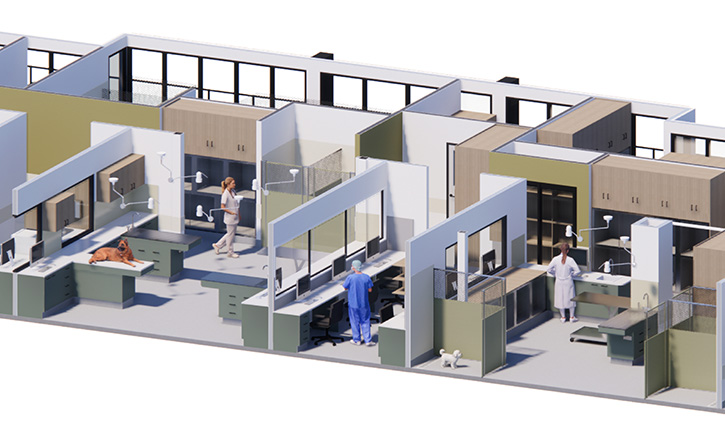 Many veterinary practices in Australia are feeling the pinch of the manpower shortage, putting vets under more pressure and contributing to dissatisfaction with work life balance and mental health problems.
Many veterinary practices in Australia are feeling the pinch of the manpower shortage, putting vets under more pressure and contributing to dissatisfaction with work life balance and mental health problems.
So, maybe you need a Vet Tech at your clinic.
Veterinary Nursing qualification
In Australia, the current Australian national qualification for vet nursing is Certificate IV in Veterinary Nursing, which takes from 18 months to 2 years to complete. The Diploma in Veterinary Nursing is then an additional qualification following on from the Cert IV, for 12 months, in 3 different streams, General Practice, Surgical, and Emergency & Critical Care
Veterinary Technology qualification
Veterinary Technology is a Bachelor’s degree taking 3 years (full time), which can incorporate and extend the Cert IV in Vet Nursing. It’s offered by Charles Sturt University, The University of Queensland, and the University of Adelaide, (and by Massey University in New Zealand, however, this isn’t yet included in the list of Vet Tech degrees eligible for the new Australian Veterinary Nurse and Technician (AVNAT) Registration Scheme)
Information provided by CSU and the University of Queensland about their Veterinary Technology degrees suggest there is more development of skills in critical thinking and problem solving, preparation for supervisory and management roles, as well as knowledge of a wider range of animal species and knowledge and professional skills in animal management, technology and welfare that can be used beyond the clinical setting. However, extended clinical support procedures are also taught. The first cohort from CSU graduated at the end of 2018.
The University of Adelaide degree will commence with its first intake in 2020. Information provided by the University suggests the program will have a strong practical component with students performing almost 500 hours of hands-on clinical experience in a veterinary workplace and in the University’s on-site clinics and diagnostic laboratories, and could equip students with specialist expertise in one or more areas including small animals; anaesthesia; imaging; equine; farming; or practice management.
How could employing a Vet Tech help?
Some clinics, emergency and critical care hospitals, and specialist centres in Australia are already using a very effective tiered system of support staff, from kennel hands and specific customer support staff/receptionists, through trainee veterinary nurses, veterinary nurses, diploma qualified VNs, degree qualified veterinary technicians, and practice managers. This means that Veterinary Surgeons gain the time to do the work that only they are qualified for.
This tiered system can also provide a structured career path for support staff, which can improve job satisfaction. Whilst attention is finally becoming focussed on the challenges for vets surrounding mental health awareness, life balance, burnout, compassion fatigue, job satisfaction, and decisions to quit the profession, we mustn’t forget there are similar challenges for our support staff.
So, rather than trying to employ another Vet in a very tight market, could this be a solution for some clinics?
- Employing a Veterinary Technician to help alleviate the heavy workload on vets, allowing vets to manage their Veterinary Surgeon duties more effectively
- Which may lead to happier vets and better retention of vets in your practice
- And even allow a pay rise for your vets, further contributing to better retention of vets
References:
Charles Sturt University
https://futurestudents.csu.edu.au/courses/animal-vet-sciences/bachelor-veterinary-technology
University of Queensland
https://future-students.uq.edu.au/study/program/Bachelor-of-Veterinary-Technology-2387
University of Adelaide
https://www.adelaide.edu.au/degree-finder/bvt_bvettech.html
Massey University
http://www.massey.ac.nz/massey/learning/programme-course/programme.cfm?prog_id=93432
Veterinary Nurses Council of Australia
https://www.vnca.asn.au/membership/recognised-qualifications/
Author:
Wendy Nathan
Kookaburra Veterinary Employment
updated 30th July 2019
This information includes the views and opinions of Kookaburra Veterinary Employment and is of a general nature only. Factual information is believed to be correct at the time of writing, however, should not be relied upon and any person should confirm details with the relevant authorities and through their own research prior to acting on any of the suggestions in this article.







 Many veterinary practices in Australia are feeling the pinch of the manpower shortage, putting vets under more pressure and contributing to dissatisfaction with work life balance and mental health problems.
Many veterinary practices in Australia are feeling the pinch of the manpower shortage, putting vets under more pressure and contributing to dissatisfaction with work life balance and mental health problems.


